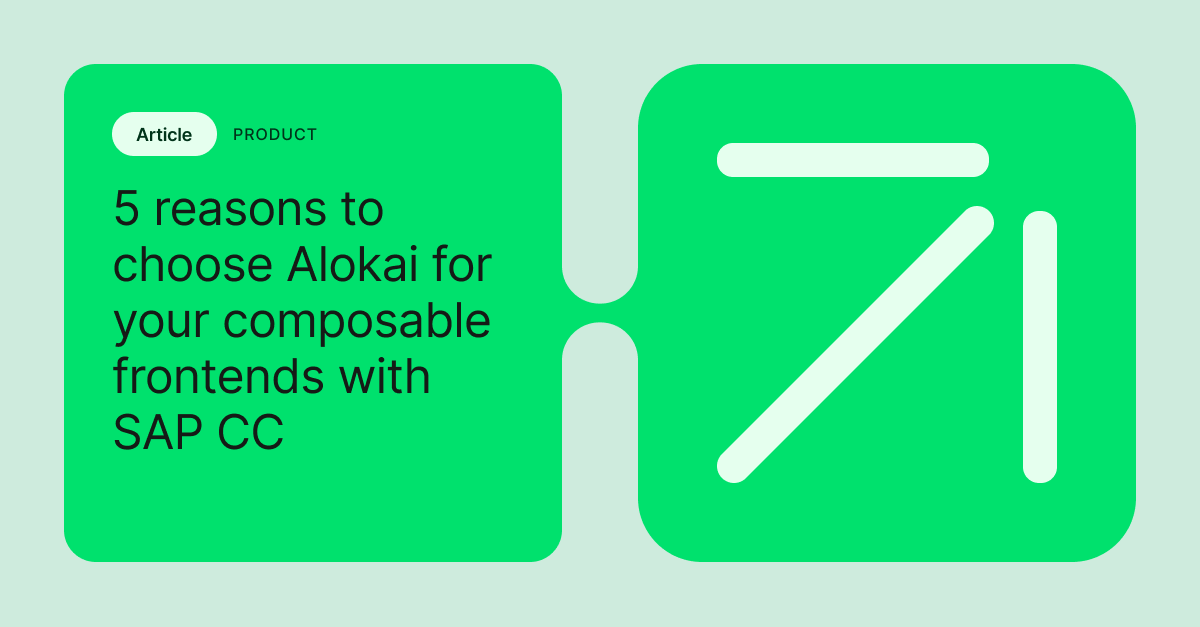Did you know that Lay's potato chips belong to Pepsico? Or that Porsche falls in the Volkswagen Group? Or that L'Oreal, most known for its make-up product, also features high-fashion names including Valentino and Prada?
These are just a few of the excellent examples of multi-brand companies we'll be covering in this post.
So, if you're contemplating diversifying your brand portfolio but are worried about how it may affect your parent brand's reputation or the costs of managing a multi-brand website effectively, this is the post for you!
We'll cover the basics of multi-brand strategies, showcase some great multi-brand website examples, and even guide you through the critical steps in building your own storefront for a multi-brand company.
Ready to dive in? Let's go!
What is a multi-brand marketing strategy?
A multi-brand marketing strategy allows a company to market and manage multiple brands to target diverse customer segments. This approach helps businesses maximize market share, reduce risk, and prevent brand cannibalization by offering distinct products under separate identities.
Coca-Cola (Coca-Cola, Sprite, Fanta, Dasani, Powerade), Unilever(Dove, Axe, Ben & Jerry’s), and Volkswagen Group (Volkswagen, Audi, Porsche, Lamborghini, Bentley) all use this strategy to appeal to different demographics while leveraging shared resources across multiple brands.
A well-executed multi-brand strategy strengthens brand positioning, enhances customer loyalty, and creates competitive advantages by catering to varied consumer preferences without diluting the core business.
But in this post we’re focusing on a very specific element of multibrand strategies—building and managing multibrand websites.
How multi-brand websites are structured
When diversifying your portfolio into several brands, you may wonder if you could host everything under one umbrella brand (and under the same domain) or if each individual brand would require its own separate website. The short answer is that it depends on your needs and your customers' expectations.
Generally, you have 3 options for building an effective multi-brand website:
Host your portfolio of brands on a single website with brand-specific sections (quite rare these days) – e.g. mars.com/brands featuring all the subbrands of the Mars Inc.;
Keep complementary brands under the same umbrella brand but with dedicated subdomains and/or subdirectories (the most common approach) – e.g. nestle.com/brands/kitkat;
Create separate websites for each brand to showcase your diverse portfolio (common for popular brands representing different industries) – e.g. chevrolet.com, even though it's a part of the GM company.
Here's how each works:
Single website with brand-specific sections
In this multi-brand single-website design example, Mars, Inc. does not highlight any of their subsidiary brands outside of the mars.com domain. Instead, the company is able to showcase multiple brands on a single page – mars.com/our-brands/[product-category] – at once, making it easier to maintain the cohesive brand identity across a diverse portfolio.
You won’t find, for example, a bounty-dot-com website. Instead, Mars’s mainpage is the only place where you get to learn some more about your favorite chocolate.
This approach is good if you have a lot of different brands with equal value and similar target audiences in mind, as breaking one site into multiple categories featuring different brands is surely easier than building a dedicated page for each sub-brand.
However, with this multi-brand website design, you'll miss out on an opportunity to emphasize each brand's unique features.
Subdomains or subdirectories for each individual brand
Subdomains (sub-brand.parent-brand.com) and subdirectories (parent-brand/brands/sub-brand.com) are a popular way for umbrella companies to showcase multiple brands on a single website at the same time. For example, Nestle is using this approach to introduce their robust family of brands:
Such an approach to multi-brand website structure allows to highlight the diversity of your portfolio and offers some level of transparency into subsidiaries. For example, Neste's site makes it easy to navigate from beverages to snacks to petcare products without leaving the primary website.
This approach allows to choose whether you want to build a dedicated website for your brand (e.g. kitkat.com for Nestle as well as nestle.com/brands/chocolate-confectionery/kitkat), or stick to the group domain (e.g. adobe.com/product/photoshop)
Using subdomains and/or subdirectories offers a simple way to manage your multi-brand website content, too. Instead of struggling with developing a separate website with unique identity and repository systems, you're reusing the existing code elements, significantly cutting down on the costs and development time.
But sometimes it's not enough.
Separate websites for each brand
Building separate websites for each individual brand under a single parental company proves particularly effective when sub-brands target dramatically different audiences or when each has its own distinct branding and market presence.
Unilever would be a good example here:
By giving each brand under their trademark a personalized spotlight, Unilever Group ensures each product stands out on its own, while driving global profits for the company. Some of the clear advantages here are better positioning, higher brand awareness, and improved SEO.
In this setup, you can find each brand’s overview on the parent company’s web page as well as an individual standalone website.
On the other hand, building and managing a separate website for each brand proves more challenging (and expensive) as your business grows, so it's usually reserved for brands with a distinct market presence and established recognition.
Multi-brand website examples: You don't need to be a Coca-Cola to successfully run a multi-brand business
In reality, most multi-brand companies tend to adopt a hybrid approach – highlighting those brands that can make it on their own with dedicated websites, while showcasing the rest of their brand portfolio on the umbrella's brand page.
But it's not what matters for an average brand. What matters most is how to build a customer-friendly website that will drive conversions.
Building one website is not an easy task. Now multiply the effort by the number of brands you have. You get the picture. Multi-brand website management is anything but a stroll in a park. So what can you do?
“Optimize your architecture to the point that will save your resources and developers’ time as much as possible without sacrificing the quality” would be an ideal answer. The problem is: how?
Let's take a look at some great multi-brand website examples to further illustrate the point.
Gap Inc.
Gap Inc. houses three major brands—Gap (duh), Banana Republic, and Old Navy. All of them are fashion brands, yet target to distinct audiences so it makes sense for each to have its own website with the brand identity to match the ideal customer.
Yet, a keen eye can tell that all three share the same backend logic. In this smart example, those are small things. Things, people who aren’t proactively search for similarities in web architecture, would likely miss. Such as:
Each site’s navigation bar starts with a subtle nod to the group, highlighting the remaining brands.
The top banner and the CTA are the same except for some minor design tweaks, up to the exact same discount offer, implying the same approach to marketing activities.
The search field, account creation, and an active shopping cart are made from the same component, including the icon design, suggesting the exact same block is used across all three brands for enabling these elements.
The the same time, the core elements, like menu navigation, page layout, or event-based advertising is completely unique for each of the three websites.
This example demonstrates how easy it is to reuse similar components while maintaining brand autonomy, and such subtle nods are exactly what we’d encourage you to aim for in building your multi-brand websites.
VF Corporation
VF Corporation (The North Face and Timberland, for example) targets similar adventure-loving audiences, diversifying mainly through products. One focuses on adventure clothes and gear, while the other is mainly known for its shoes and accessories. But mainly shoes.
Still, both have some distinct differences when it comes to brand positioning and design systems. What is not different, though, is their product and sorting features.
The sorting and filtering system is clearly the same, up to the point of using the exact same design system for the buttons and fonts, as well as the common logic for sorting.
The same would be true for the “sort by color” element, presented in exactly the same manner.
And the same feedback collecting service is most likely used across both brands as well.
The logic for the remaining elements on the product cart is also pulled from the same backend, featuring identical elements like product name, product review score, number of reviews, and price. At the same time, even this widely reused element is customized for each brand’s design purposes (e.g. Timberland’s review stars are yellow while The North Face keeps its black, just like one brand opts in for a CTA-like add-to-cart button, while another chooses a simple icon).
VF Corporation demonstrates how the core components of an ecommerce brand—product cards—don’t need to be overly complex when it comes to managing multiple brands. Guessing the logic behind their tech stack’s architecture, it’s most likely composable in nature, allowing the re-use of similar components across different brands and sites, without having to write the entire component—and the logic behind it—from scratch every time.
It makes adding new products, announcing discounts, or managing stock inventory a much easier task!
10 key features of successful multi-brand websites
What do all those brands have in common? They are designed in a way that helps increase brand awareness without sacrificing the unique features of each brand. Here’s what to pay attention to in your architecture:
Component-based architecture
Build with reusable UI components (e.g., product cards, nav bars), enabling consistency across brands and easy customization through overrides.Design system
Use centralized variables for colors, typography, and spacing to quickly theme new brands without duplicating styling logic.Modular CMS
Integrate a headless or modular CMS to give each brand control over its own content while maintaining a consistent backend structure.Shared backend logic with brand-specific overrides
Centralize key ecommerce functionality (checkout, cart, search) and allow override options for brand-specific business logic or experiences.File-based routing and brand inheritance
Use structured folder-based routing (e.g., /brands/brand-a/products) with support for inheriting layout/templates across brands to reduce code duplication.Middleware/data orchestration layer
Implement a middleware layer to normalize data from different backends (PIM, CMS, ERP, etc.), enabling consistent data delivery per brand.Multi-tenant support
Architect the system to support multiple storefronts (tenants) from a single codebase, ensuring brand-specific data isolation and management.Centralized configuration management
Store brand-specific settings (e.g., logos, themes, feature toggles) in a single config layer or database, simplifying updates and deployments.Scalable hosting & deployment pipelines
Use CI/CD pipelines and modern infrastructure (Docker, serverless) to deploy updates per brand, ensuring scalable performance and selective rollouts.SEO and localization tools per brand
Enable brand-level control over SEO metadata, hreflang tags, and localized URLs to support multi-language and multi-region optimization strategies.
Learn more about simplified multisite website building with Alokai
How to create a high-performing multi-brand website
Managing multiple brands often seems like a daunting task, partially because of the complex technological setup commonly associated with code duplication and separate tech stacks. Maintaining cohesive user experience across several companies seems problematic and expensive. And it definitely used to be the case (and still is for some of the monolithic brand architectures).
However, it doesn't have to be!
With the right solution – such as Alokai's multistore-first storefront – you can start building your multi-brand website designed with future scalability in mind.
Good luck!













